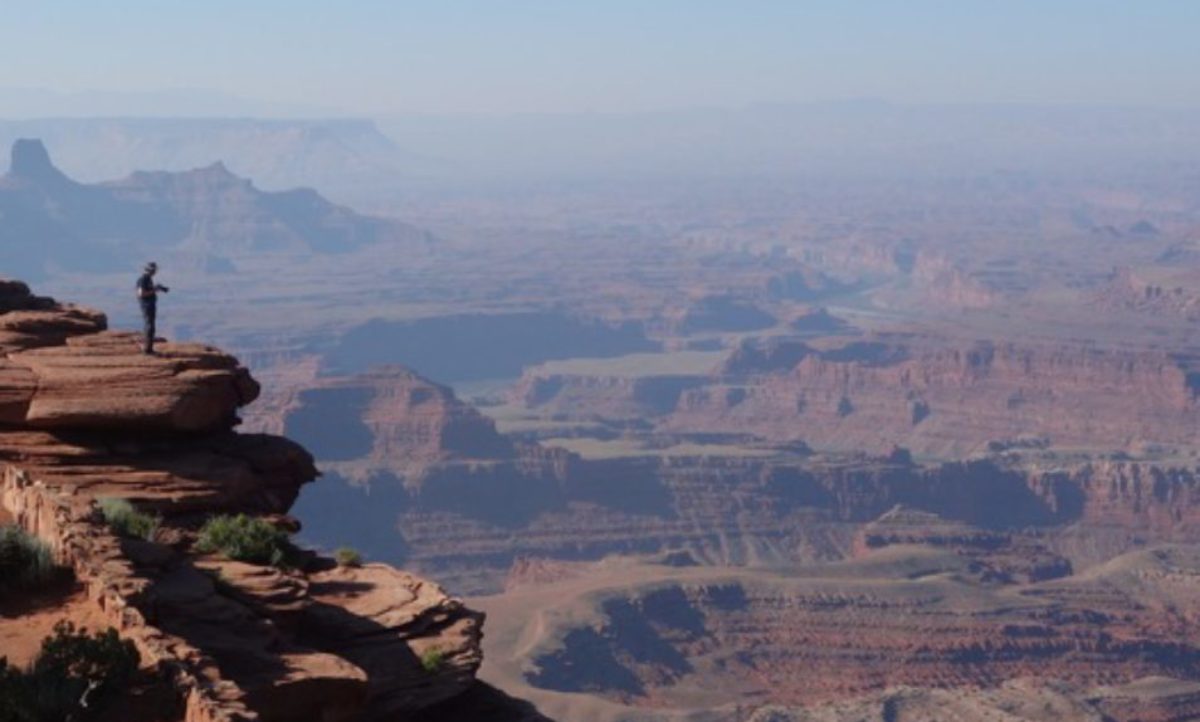I’m at Rome airport, and I’ve checked in for my first flight to Paris. I’ll fly nonstop to SFO after that. There’s something good to be said about arriving at the airport at 4:30 AM. I’m flying Air France with economy plus which was discounted dramatically by the OAT people – $50 per seat for what others are paying 900€! – which entitles me to Sky Priority treatment. I jumped the line to get my bag checked. I waited five minutes. Amazing..
Since I have free time, a rarity these last three weeks, I decided to write about one of the most interesting day trips we had on Wednesday September 27. This was optional, which means we paid extra, but it was well worth it. I’d never heard of these two places in italy and I imagine you haven’t either. There were eight of us; the rest of the group decided to stay in beautiful Pienza and explore the village.
Our first photo stop was at the walled tufa city. This almost perfect site was startling in its complexity: seeing a walled city like this reminded me of a carefully constructed sand castle. We drove to our first restroom stop in the village, where we stopped at the Italian equivalent of a bar and small convenience store, where we either had a quick espresso or picked up a bottle of water as payment for using their facilities, and we had a few minutes to stroll around the street. I found a nice local to capture digitally and a cat as well, of course.
Our first tour was to the Sovana Archeological Park, in the city of tufa, where there was an Etruscan necropolis. We met our local guide there. It is a unique place for both lovers of nature and lovers of archeology, and the tombs we saw encompassed the various levels of society during the Etruscan era. Our guide showed us the tomb of a common person, and then the tomb of someone of high standing in the society, the Hildebrand tomb, which resembled a temple. We walked around and looked at what had probably been headstones, scattered throughout the park. Most of the graves are empty, because the bodies had been taken by tomb robbers throughout the centuries.
The rock in this area is called tufa, which is a soft kind of volcanic rock. We were in two tufa villages this day.
Another amazing thing about this park were the caves, that allowed the Etruscans to navigate between one part of their city to another. These caves were used even in recent history, and partisans hid in them – we saw a date : 1945, carved into the soft stone.
The town of Pitigliano was voted as one of the most beautiful villages in Italy, which it is. It is also a historical treasure trove of information about the Jewish population, which was thriving and coexisting nicely until the Medici family came into power. They were segregated into a ghetto, which was later called the “little Jerusalem,” which is now a museum. We were able to go underground to see the structures where the people lived and worked. They were able to go out into the village during the day, and in 1773, a new ruler, the liberal Catholic Grand Duke of Tuscany, Pierrot Leopoldo, officially recognized the Jews of Pitigliano, which meant they could come and go as they pleased. By 1799 the ghetto was desegregated and by 1850 there were only 400 Jews in town, roughly 10% of the population. The population shrank in 1866 when a unified Italy meant that Jews were granted equal rights and were allowed to move about the country. Many left for the bigger cities. In 1938 when the Fascist racist laws were applied there were only 60 Jews living there, and one poignant photo shows a Bar Mitzvah during this time. Catholic families in the area saved these people from the Nazis; others hid in caves. In fact, the only Jews from the village who were killed were those who fled. There is a synagogue here but services are no longer held. The family of Elena Servi, age 82 is the only surviving Jewish family in town; she has dedicated her life to preserving and restoring her hometown’s Jewish history.
An aside: I’m home now as I finish this post. I found a fascinating article in The NY Times called “A little Jerusalem in the Heart of Italy” if you’d like to google it for more information. It’s a detailed article about a unique place, well off the beaten track of the usual tourist itinerary.
We had lunch in the village and a little time to explore on our own before returning to our hotel and village of Pienza.
Just before we left I captured a few more photos of this beautiful special village.


































































 We left our beautiful hotel, the Villa Sabolini, regretfully. There are, however, compensations.
We left our beautiful hotel, the Villa Sabolini, regretfully. There are, however, compensations.




































































































